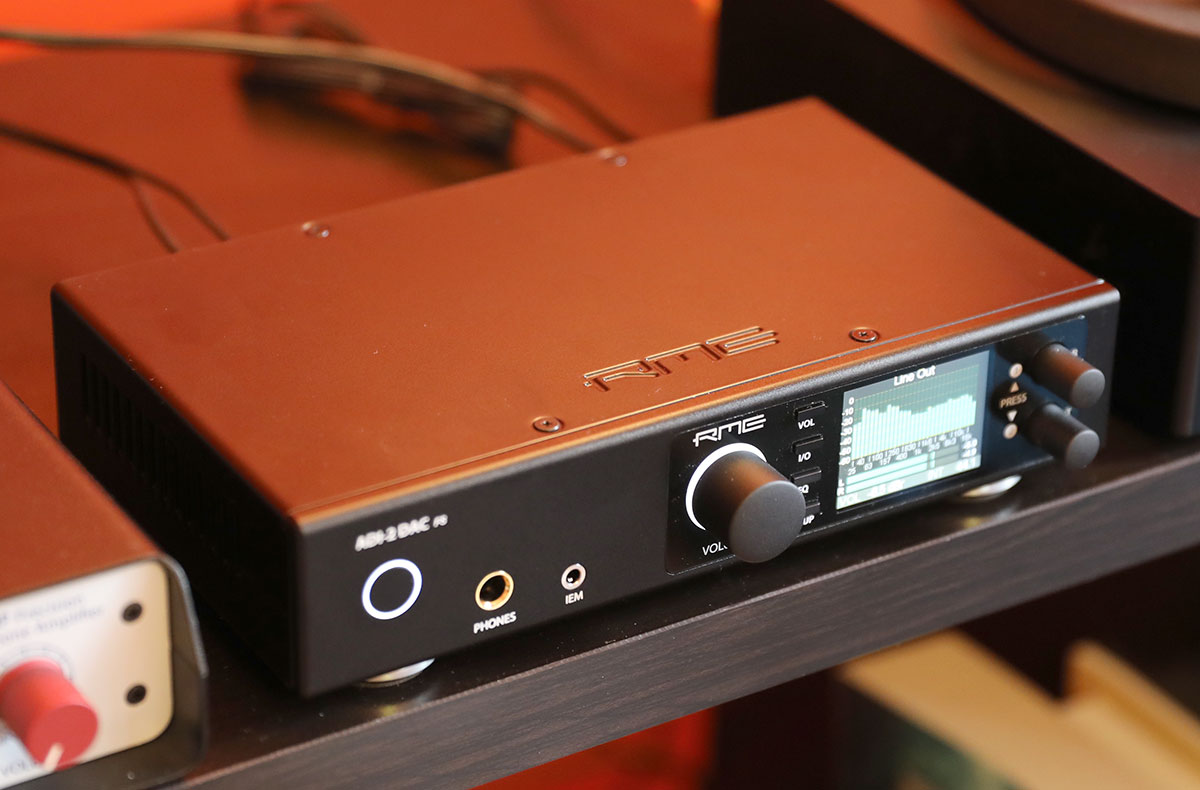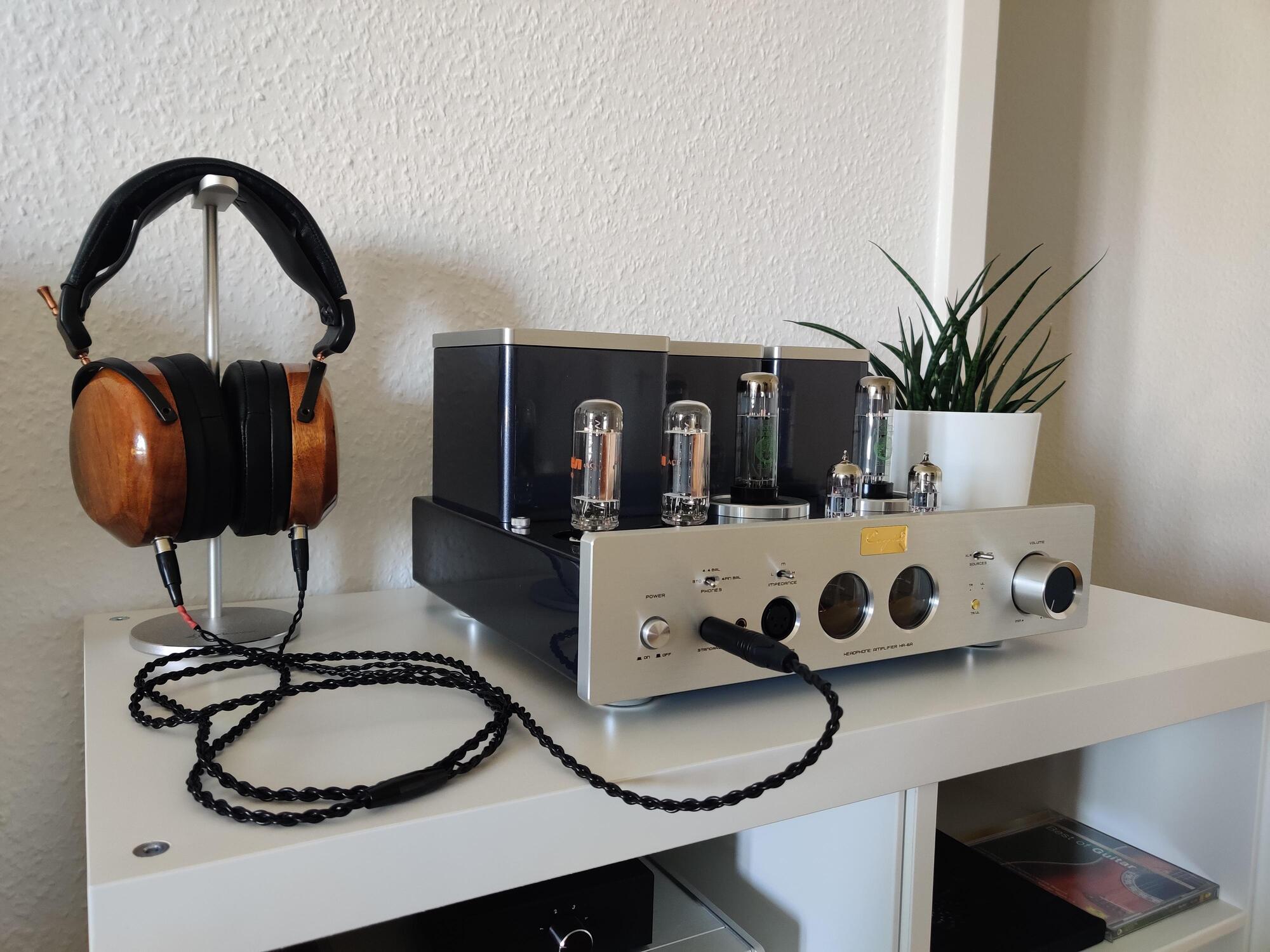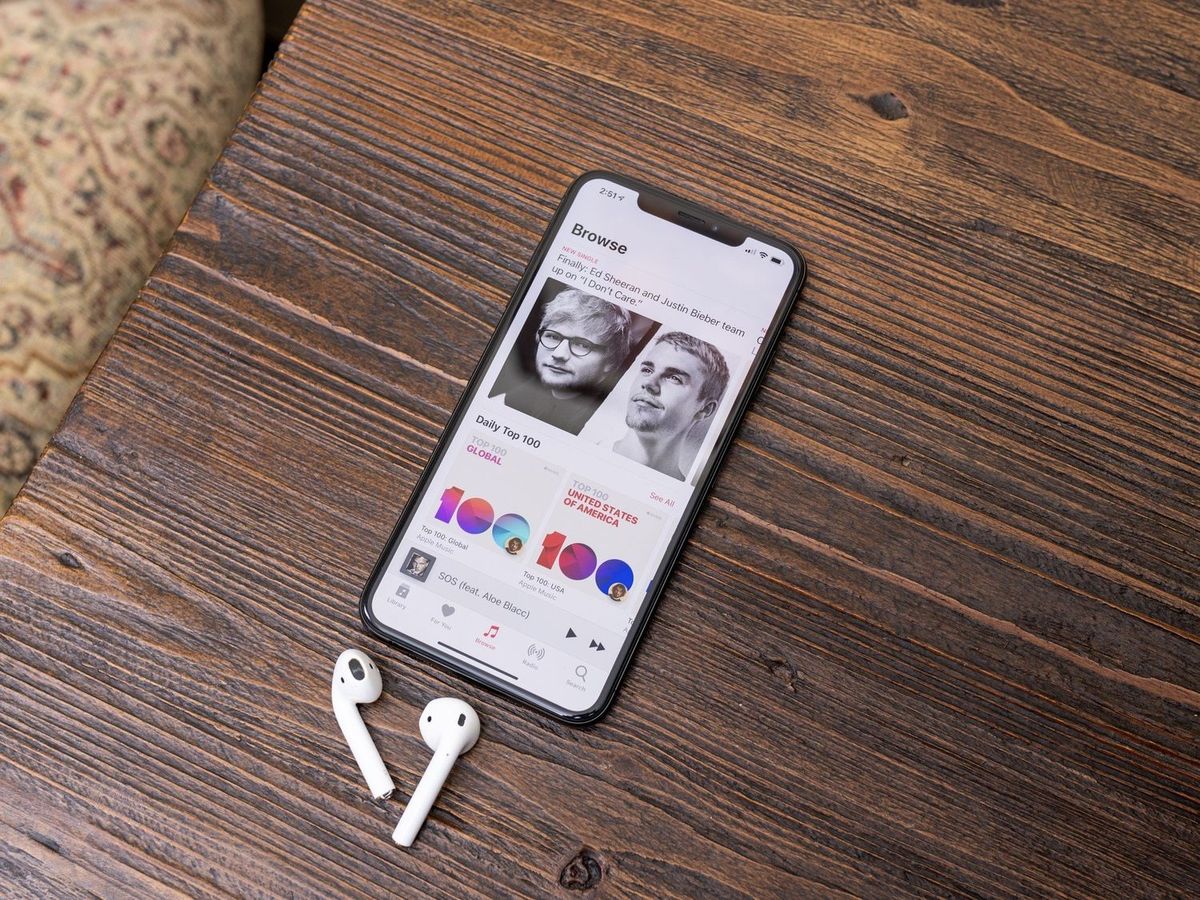Home>Production & Technology>Audiophile>What Is An Audiophile Recording


Audiophile
What Is An Audiophile Recording
Modified: February 15, 2024
Learn all about audiophile recordings and the true definition of an audiophile. Discover the ultimate sound quality and what it takes to create a true audiophile experience.
(Many of the links in this article redirect to a specific reviewed product. Your purchase of these products through affiliate links helps to generate commission for AudioLover.com, at no extra cost. Learn more)
Table of Contents
Introduction
Welcome to the world of audiophile recordings, where the pursuit of sonic perfection meets the passion for music. In this article, we will delve into the fascinating realm of audiophile recordings, exploring what they are, their characteristics, and why they hold a special place in the hearts of music enthusiasts.
Audiophile recordings refer to meticulously crafted recordings that aim to capture music with the highest level of audio fidelity. These recordings are created by dedicated audio engineers who strive to reproduce the artist’s performance in a way that preserves the nuances, dynamics, and emotions of the music.
Stepping into the world of audiophile recordings is like entering a temple of sound, where every note, every instrument, and every breath of the performer comes alive with stunning clarity and detail. Audiophiles value the ability to hear the music as it was intended to be heard, with all its intricacies and subtleties.
As technology continues to advance, the availability and quality of audiophile recordings have increased exponentially. With high-resolution audio formats, such as FLAC and DSD, and advancements in playback systems, music lovers now have the opportunity to experience recordings that rival the quality of a live performance.
In the next sections, we will explore the defining characteristics of audiophile recordings, the importance they hold in the music industry, and how to identify and appreciate their unique qualities. So, grab your favorite pair of headphones or settle into your preferred listening spot, as we embark on a journey to discover the world of audiophile recordings.
Definition of Audiophile Recording
Before we dive deeper into the world of audiophile recordings, let’s start by clarifying what exactly this term means. An audiophile recording, also known as a hi-fi recording, is a music recording that is created with the highest standards of audio fidelity in mind.
Unlike mainstream recordings that prioritize mass appeal and loudness, audiophile recordings prioritize the accurate reproduction of the original performance. They strive to capture and preserve the fine details, dynamics, and nuances of the music, providing a more immersive and engaging listening experience.
One key aspect of audiophile recordings is high-resolution audio. This refers to audio recordings that have a higher sampling rate and bit depth than standard CD-quality audio. High-resolution audio allows for a more faithful representation of the original sound, providing greater clarity and detail.
Another important element of audiophile recordings is the use of high-quality recording equipment. Audiophile recordings are often made using professional-grade microphones, preamps, and converters to capture the music with utmost precision and accuracy. Additionally, the recordings are typically mastered with care, ensuring that the final product retains the integrity of the original performance.
It’s important to note that not all recordings labeled as “audiophile” live up to the standard. Some recordings may claim to be audiophile-quality, but fail to deliver the exceptional sound reproduction that true audiophiles seek. Therefore, it’s essential for music enthusiasts to develop an ear for distinguishing genuine audiophile recordings from those that may be more marketing hype than high-quality.
Now that we have a clear understanding of what an audiophile recording is, let’s explore the characteristics that set them apart and make them a sought-after choice for discerning listeners.
Characteristics of Audiophile Recordings
Audiophile recordings are known for their exceptional audio quality and attention to detail. They possess several characteristics that set them apart from standard recordings and contribute to their allure among music enthusiasts. Let’s explore some of these defining characteristics:
- Clarity and Detail: Audiophile recordings excel in capturing the smallest nuances of the performance. Every instrument, vocal expression, and subtle sound is reproduced with remarkable clarity, allowing listeners to appreciate the finest details of the music.
- Dynamic Range: Audiophile recordings preserve the wide dynamic range of the original performance. From the quietest whispers to the loudest crescendos, these recordings capture the full range of musical dynamics, providing a more immersive and lifelike listening experience.
- Balanced Frequency Response: Audiophile recordings strive for an accurate and balanced frequency response. This means that the recording reproduces the entire audible spectrum of sound faithfully, ensuring that no frequency range is overemphasized or overlooked.
- Spatial Imaging: Audiophile recordings create a sense of space and dimensionality. By accurately capturing the spatial characteristics of the original performance venue, these recordings provide a more realistic soundstage, allowing listeners to visualize the placement of instruments and performers.
- Low Distortion: Audiophile recordings aim to minimize distortion in the audio signal. Distortion can introduce unwanted artifacts and alter the original sound quality. By keeping distortion levels low, audiophile recordings maintain the purity and integrity of the music.
- Ambience and Reverberation: Audiophile recordings capture the natural ambience and reverberation of the performance space. This adds depth and realism to the recording, making the listener feel as if they are present in the room where the music was originally performed.
These characteristics combine to create an exceptional listening experience where the music comes to life with unparalleled fidelity. Audiophile recordings strive to recreate the magic and emotion of a live performance, allowing listeners to fully immerse themselves in the music.
Next, let’s delve into the importance of audiophile recordings in the music industry and why they are highly regarded by both artists and music enthusiasts.
Importance of Audiophile Recordings
Audiophile recordings play a significant role in the music industry, as they uphold the integrity of the original performance and provide an enhanced listening experience for music enthusiasts. Let’s explore some of the reasons why audiophile recordings are highly regarded:
- Preservation of Artistic Vision: Audiophile recordings strive to capture the artist’s original vision and intention. By faithfully reproducing the nuances, dynamics, and emotions of the music, these recordings preserve the true essence and artistic integrity of the performance.
- Increased Listener Engagement: Audiophile recordings offer a more immersive and engaging listening experience. The exceptional audio quality and attention to detail draw the listener into the music, allowing them to connect with the performance on a deeper level.
- Enhanced Appreciation of Music: Audiophile recordings bring out the subtleties and intricacies of the music that may go unnoticed in standard recordings. By experiencing the full range of dynamics and the finest details, listeners can gain a deeper appreciation for the craftsmanship and artistry of the music.
- Reference for Audiophiles: Audiophile recordings serve as a benchmark for audio enthusiasts. Aspiring audiophiles use these recordings to evaluate and optimize their audio systems, striving to achieve the highest level of audio fidelity possible.
- Promotion of High-Quality Audio: Audiophile recordings advocate for high-quality audio reproduction. They demonstrate the capabilities and potential of audio equipment and formats, encouraging the adoption and development of technologies that deliver superior sound quality.
- Preservation of Musical Heritage: Audiophile recordings contribute to the preservation of important musical performances and cultural heritage. By capturing and archiving these performances in exceptional audio quality, future generations can enjoy and learn from the rich musical legacy.
Audiophile recordings not only benefit listeners but also provide recognition for artists and audio engineers who strive for excellence in their craft. These recordings showcase their talent and dedication to producing recordings of the highest quality.
Now that we understand the importance of audiophile recordings, let’s explore some popular examples that have become go-to references for audiophiles seeking audio perfection.
Popular Audiophile Recordings
Over the years, several recordings have earned a reputation for their exceptional audio quality, making them popular choices among audiophiles. These recordings serve as benchmarks for audio enthusiasts and are often sought after for their outstanding sound reproduction. Let’s take a look at some notable examples of popular audiophile recordings:
- Pink Floyd – “The Dark Side of the Moon”: This iconic album is revered for its sonic excellence. With its immersive soundscapes, intricate instrumentation, and carefully crafted production, it has become a classic audiophile favorite.
- Miles Davis – “Kind of Blue”: Considered one of the greatest jazz albums of all time, “Kind of Blue” captivates listeners with its sublime performances and exceptional sound quality. The recording captures the essence of the performances, allowing the listener to experience the magic of Miles Davis and his talented ensemble.
- Stevie Ray Vaughan – “Texas Flood”: Known for his unparalleled guitar skills, Stevie Ray Vaughan showcased his talents on this album. The recording captures the energy and raw power of his performance, making it a go-to choice for audiophiles looking for a guitar-driven masterpiece.
- Norah Jones – “Come Away with Me”: This Grammy-winning album introduced the world to Norah Jones’ enchanting voice and soulful songwriting. The recording has a warm and intimate quality, making it a favorite among audiophiles who appreciate pristine vocals and rich instrumentation.
- Peter Gabriel – “So”: Known for its innovative production and genre-blending sound, “So” is highly regarded for its meticulous attention to detail. This audiophile classic features immersive soundscapes and a wide dynamic range, showcasing Gabriel’s artistry in its full glory.
These are just a few examples of popular audiophile recordings. Each of these albums stands out for its exceptional audio quality and the ability to transport listeners into a world of captivating music.
So, whether you’re a fan of rock, jazz, blues, or soul, there are plenty of audiophile recordings available to satisfy your musical cravings and provide an unparalleled listening experience.
Now that we’ve explored some popular audiophile recordings, let’s learn how to identify and appreciate the unique qualities of these recordings.
How to Identify Audiophile Recordings
Identifying genuine audiophile recordings can be a challenge, as not all recordings labeled as “audiophile” live up to the standard. However, there are certain indicators that can help you determine whether a recording meets the criteria of true audiophile quality. Here are some tips to help you identify audiophile recordings:
- Research the Recording Label: Start by researching the reputation of the recording label. Certain labels are known for producing high-quality audiophile recordings, so look for recordings from labels such as Mobile Fidelity Sound Lab (MFSL), Analogue Productions, or Chesky Records.
- Check for High-Resolution Formats: Audiophile recordings are often released in high-resolution formats such as FLAC or DSD. Look for recordings available in these formats, as they generally indicate a focus on audio quality.
- Read Reviews and Recommendations: Seek out reviews and recommendations from trusted sources, including audiophile forums, magazines, and websites. Look for positive reviews that highlight the exceptional sound quality and attention to detail in the recording.
- Pay Attention to Mastering: Audiophile recordings are typically well-mastered, ensuring that the final product retains the integrity of the original performance. Look for recordings that mention the use of high-quality mastering techniques and aim for a balanced and natural sound.
- Consider the Recording Techniques: Audiophile recordings often employ specific recording techniques to capture the best possible sound. Look for recordings that mention the use of high-quality microphones, analog recording equipment, or techniques such as minimal processing and overdubbing.
- Follow Recommendations from Audiophile Communities: Engage with fellow audiophiles and join online communities dedicated to high-quality audio. These communities often share recommendations and discuss their favorite audiophile recordings, allowing you to discover hidden gems that may not be widely known.
Remember, the true test of an audiophile recording is in the listening experience. Listen carefully to the recording using high-quality audio equipment and trust your ears to determine whether it meets your expectations for audio fidelity and exceptional sound quality.
By following these tips and developing your ear for recognizing high-quality recordings, you can start building a library of audiophile recordings that will deliver an extraordinary listening experience.
Next, let’s explore the distinctive features and benefits of audiophile recordings that set them apart from standard recordings.
Features of Audiophile Recordings
Audiophile recordings possess certain distinctive features that contribute to their exceptional sound quality and immersive listening experience. These features are meticulously crafted to reproduce the music as faithfully as possible, capturing all the nuances and details of the original performance. Let’s explore some of the key features of audiophile recordings:
- High-Quality Audio Equipment: Audiophile recordings are created using top-of-the-line audio equipment, including high-end microphones, preamps, and converters. This ensures the capture of the most accurate and pristine sound possible.
- High-Resolution Formats: Audiophile recordings are often available in high-resolution audio formats, such as FLAC or DSD. These formats offer greater audio detail and a wider frequency range compared to standard CD-quality audio.
- Optimized Mixing and Mastering: Audiophile recordings undergo careful mixing and mastering processes to ensure optimal sound quality. Skilled audio engineers use techniques to balance levels, enhance clarity, and maintain a natural sound representation of the original performance.
- Wide Dynamic Range: Audiophile recordings typically have a wide dynamic range, allowing for a greater contrast between the softest and loudest passages of music. This dynamic range enhances the realism and impact of the recording.
- Accurate Frequency Response: Audiophile recordings strive for an accurate frequency response, ensuring that the full spectrum of sounds is faithfully reproduced. This results in a balanced representation of the music, with no excessive emphasis on certain frequency ranges.
- Immersive Spatial Imaging: Audiophile recordings employ techniques to create a sense of space and dimensionality. The recordings aim to capture the natural ambience and spatial characteristics of the original performance venue, creating an immersive soundstage.
- Low Distortion and Noise: Audiophile recordings are engineered to minimize distortion and noise, ensuring the purity and clarity of the music. By keeping the audio signal free from unwanted artifacts, these recordings provide a more accurate representation of the original performance.
Through these features, audiophile recordings strive to bring the listener closer to the essence of the music, providing a listening experience that is faithful to the intentions of the artist and the artistry of the performance.
Now that we have explored the features of audiophile recordings, let’s uncover the benefits that these recordings offer to music enthusiasts and audio connoisseurs.
Benefits of Audiophile Recordings
Listening to audiophile recordings offers a range of benefits that elevate the music listening experience to new heights. These recordings are not just for audiophiles; they provide advantages for all music enthusiasts seeking to immerse themselves in the wonder of high-fidelity sound. Let’s delve into the benefits of audiophile recordings:
- Unparalleled Sound Quality: Audiophile recordings reproduce music with exceptional clarity, detail, and accuracy. Every instrument, vocal, and subtle nuance is meticulously captured, allowing the listener to experience the music as if they were in the recording studio or live performance venue.
- Enhanced Appreciation of Music: Audiophile recordings bring forth the smallest intricacies and subtleties of the music, allowing listeners to gain a deeper appreciation for the artistry and craftsmanship involved. From the delicate intonation of a vocalist to the precise plucking of guitar strings, these recordings reveal the true beauty of the music.
- Immersive and Engaging Listening Experience: Audiophile recordings create a captivating and immersive listening experience. The wide dynamic range, spatial imaging, and attention to detail draw the listener into the music, making it feel more alive and present.
- Connection with the Artist’s Intention: Audiophile recordings aim to preserve the original intention and emotion of the artist. By faithfully capturing the dynamics, timbre, and subtle nuances of the performance, these recordings allow listeners to connect with the music on a deeper level, experiencing it as intended.
- Benchmark for Audio Equipment: Audiophile recordings serve as reference material for evaluating and optimizing audio equipment. By using these recordings as a benchmark, audiophiles can fine-tune their systems to achieve the highest level of audio fidelity, ensuring that they are getting the most out of their equipment.
- Rediscover Old Favorites: Audiophile recordings can breathe new life into beloved songs and albums. The heightened audio quality and attention to detail can reveal elements of the music that may have gone unnoticed before, allowing listeners to experience their favorite tracks in a fresh and exciting way.
- Preserving Musical Heritage: Audiophile recordings contribute to the preservation of important musical performances and cultural heritage. By capturing and archiving these performances in exceptional audio quality, future generations can enjoy and learn from the rich musical legacy.
With these benefits, audiophile recordings offer a truly transformative listening experience, allowing listeners to immerse themselves in the beauty and emotion of the music like never before.
As we conclude our exploration of the world of audiophile recordings, it’s clear that they hold a special place in the hearts of music enthusiasts. Whether you’re a dedicated audiophile or someone who simply appreciates high-quality sound, these recordings offer an unparalleled opportunity to rediscover the magic of music. So, sit back, relax, and indulge in the richness and fidelity of audiophile recordings.
Conclusion
The world of audiophile recordings is a captivating realm where music lovers can indulge in the pursuit of sonic perfection. These carefully crafted recordings capture the essence and emotion of the music, providing an enhanced listening experience that is both immersive and engaging.
Throughout this article, we have explored the definition of audiophile recordings and their characteristics. We have also delved into the importance of these recordings and how they contribute to the preservation and appreciation of music. Additionally, we discussed how to identify true audiophile recordings, the distinctive features they possess, and the benefits they offer to listeners.
Audiophile recordings are not limited to a specific genre or artist; they span across various musical styles and capture performances that resonate with music enthusiasts worldwide. From iconic albums like “The Dark Side of the Moon” by Pink Floyd to jazz masterpieces like “Kind of Blue” by Miles Davis, these recordings showcase the artistry and dedication of both the musicians and the recording engineers.
By seeking out audiophile recordings, listeners can embark on a journey to discover the magic and intricacy of the music they love. They can experience the subtle details, dynamic range, and immersive spatial imaging that bring the performances to life. Audiophile recordings offer a deeper connection with the music, allowing listeners to appreciate the craftsmanship and emotions conveyed by the artists.
As technology continues to advance, the availability and quality of audiophile recordings continue to grow. High-resolution audio formats, improved playback systems, and the passion of audio enthusiasts contribute to the flourishing world of audiophile recordings.
So, whether you are a seasoned audiophile looking to expand your collection or a curious music lover eager to immerse yourself in the beauty of sound, audiophile recordings offer an unparalleled sonic experience. Embrace the world of audiophile recordings, and let the music transport you to new realms of musical enjoyment.











